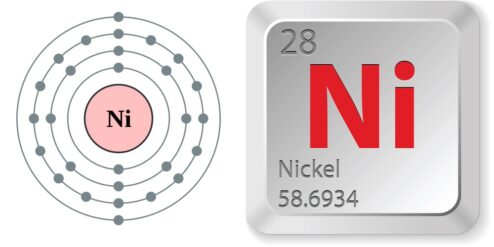Nickel is a trace element that is naturally present in many foods and is also absorbed from the environment. While it is necessary for the body in small amounts, excessive intake can lead to health problems. This article explores the role of diet in nickel absorption and the foods that can block its absorption. It also discusses the science behind these foods and the potential health risks of excessive nickel.
Understanding Nickel and Its Absorption
Nickel is a trace mineral that is present in the soil and water, and thus makes its way into our food chain. It is absorbed in the gastrointestinal tract and is then transported to various tissues in the body. The absorption of nickel can vary greatly depending on the individual and their diet. Some people may absorb more nickel than others due to genetic factors or due to the presence of certain substances in their diet that can enhance or inhibit nickel absorption.
The body’s ability to absorb nickel is also influenced by the form in which it is consumed. Soluble forms of nickel, such as those found in water and certain foods, are more readily absorbed than insoluble forms. Furthermore, the presence of certain other minerals and vitamins can also affect nickel absorption. For example, iron and vitamin C can inhibit nickel absorption, while vitamin B12 and folic acid can enhance it.
The absorption of nickel can also be influenced by the pH level of the gastrointestinal tract. A more acidic environment can enhance nickel absorption, while a more alkaline environment can inhibit it. Therefore, factors that affect the pH level, such as the consumption of certain foods or medications, can also affect nickel absorption.
Lastly, certain health conditions can also affect nickel absorption. For example, people with gastrointestinal disorders such as Crohn’s disease or ulcerative colitis may absorb more nickel than healthy individuals. Similarly, people with iron deficiency may also absorb more nickel.
The Role of Diet in Nickel Absorption
Diet plays a crucial role in nickel absorption. Certain foods are high in nickel and can contribute to increased absorption. These include whole grains, nuts, dried fruits, legumes, and certain types of fish and shellfish. On the other hand, foods that are low in nickel include refined grains, dairy products, poultry, and certain types of fruits and vegetables.
In addition to the nickel content of foods, the presence of certain other substances in the diet can also affect nickel absorption. For example, phytic acid, a substance found in whole grains and legumes, can bind to nickel and inhibit its absorption. Similarly, certain dietary fibers can also bind to nickel and reduce its absorption.
On the other hand, certain substances can enhance nickel absorption. For example, vitamin C can enhance the absorption of nickel, while vitamin B12 and folic acid can inhibit it. Therefore, a diet that is high in these vitamins can potentially increase nickel absorption.
Lastly, the method of cooking can also affect nickel absorption. For example, cooking in stainless steel pots and pans can increase the nickel content of food, while cooking in glass or ceramic cookware can reduce it.
Foods That Can Block Nickel Absorption
Certain foods can block nickel absorption. These include foods that are high in iron and vitamin C. Iron can bind to nickel and prevent its absorption, while vitamin C can reduce the solubility of nickel, thereby reducing its absorption. Foods that are high in iron include red meat, poultry, fish, and leafy green vegetables, while foods that are high in vitamin C include citrus fruits, strawberries, bell peppers, and broccoli.
In addition to iron and vitamin C, certain other substances can also block nickel absorption. These include phytic acid, a substance found in whole grains and legumes, and certain dietary fibers. Foods that are high in these substances include whole grains, nuts, seeds, and legumes.
Furthermore, certain types of dairy products can also block nickel absorption. These include milk, cheese, and yogurt. These foods are low in nickel and high in calcium, a mineral that can bind to nickel and prevent its absorption.
Lastly, certain types of fruits and vegetables can also block nickel absorption. These include apples, bananas, carrots, and potatoes. These foods are low in nickel and high in dietary fiber, which can bind to nickel and reduce its absorption.
The Science Behind Nickel Blocking Foods
The science behind nickel blocking foods is based on the principle of mineral competition. This principle states that certain minerals can compete with each other for absorption in the gastrointestinal tract. For example, iron and nickel can compete for absorption, and if the diet is high in iron, less nickel will be absorbed.
Similarly, certain substances can bind to nickel and prevent its absorption. For example, phytic acid, a substance found in whole grains and legumes, can bind to nickel and prevent its absorption. Similarly, certain dietary fibers can also bind to nickel and reduce its absorption.
Furthermore, the pH level of the gastrointestinal tract can also affect nickel absorption. A more acidic environment can enhance nickel absorption, while a more alkaline environment can inhibit it. Therefore, foods that can alter the pH level, such as citrus fruits and vinegar, can potentially reduce nickel absorption.
Lastly, certain vitamins can also affect nickel absorption. For example, vitamin C can reduce the solubility of nickel, thereby reducing its absorption, while vitamin B12 and folic acid can enhance it.
Implementing a Low-Nickel Diet
Implementing a low-nickel diet can help reduce nickel absorption. This involves avoiding foods that are high in nickel, such as whole grains, nuts, dried fruits, legumes, and certain types of fish and shellfish. Instead, one should consume foods that are low in nickel, such as refined grains, dairy products, poultry, and certain types of fruits and vegetables.
In addition to avoiding high-nickel foods, one should also consume foods that can block nickel absorption. These include foods that are high in iron and vitamin C, such as red meat, poultry, fish, citrus fruits, strawberries, bell peppers, and broccoli.
Furthermore, one should also consider the method of cooking. Cooking in stainless steel pots and pans can increase the nickel content of food, while cooking in glass or ceramic cookware can reduce it.
Lastly, one should also consider taking a vitamin and mineral supplement. This can help ensure that the body gets the necessary nutrients, while also potentially reducing nickel absorption.
Potential Health Risks of Excessive Nickel
Excessive intake of nickel can lead to a number of health problems. These include skin problems, such as dermatitis and eczema, respiratory problems, such as asthma and bronchitis, and gastrointestinal problems, such as nausea, vomiting, and diarrhea.
In addition to these acute effects, long-term exposure to high levels of nickel can also lead to chronic health problems. These include kidney damage, lung cancer, and heart disease.
Furthermore, certain individuals may be more susceptible to the effects of nickel. These include people with nickel allergy, people with gastrointestinal disorders, and people with iron deficiency.
Therefore, it is important to monitor one’s nickel intake and to take steps to reduce it if necessary.
Nickel is a trace element that is necessary for the body in small amounts, but excessive intake can lead to health problems. Diet plays a crucial role in nickel absorption, and certain foods can block its absorption. By understanding the role of diet in nickel absorption and by implementing a low-nickel diet, one can potentially reduce their nickel intake and avoid the associated health risks.
Per approfondire:
-
Nickel in the Human Diet and Its Health Effects: This article provides a comprehensive overview of the role of nickel in the human diet and its potential health effects.
-
Dietary Nickel as a Cause of Systemic Contact Dermatitis: This study explores the link between dietary nickel and systemic contact dermatitis, a type of skin inflammation.
-
Nickel Allergy and Diet: This article provides practical advice on how to manage a nickel allergy through diet.
-
Low Nickel Diet in Dermatology: This study explores the role of a low nickel diet in managing dermatological conditions.
-
Nickel, its adverse health effects & oxidative stress: This article provides an in-depth look at the adverse health effects of nickel and the role of oxidative stress.


